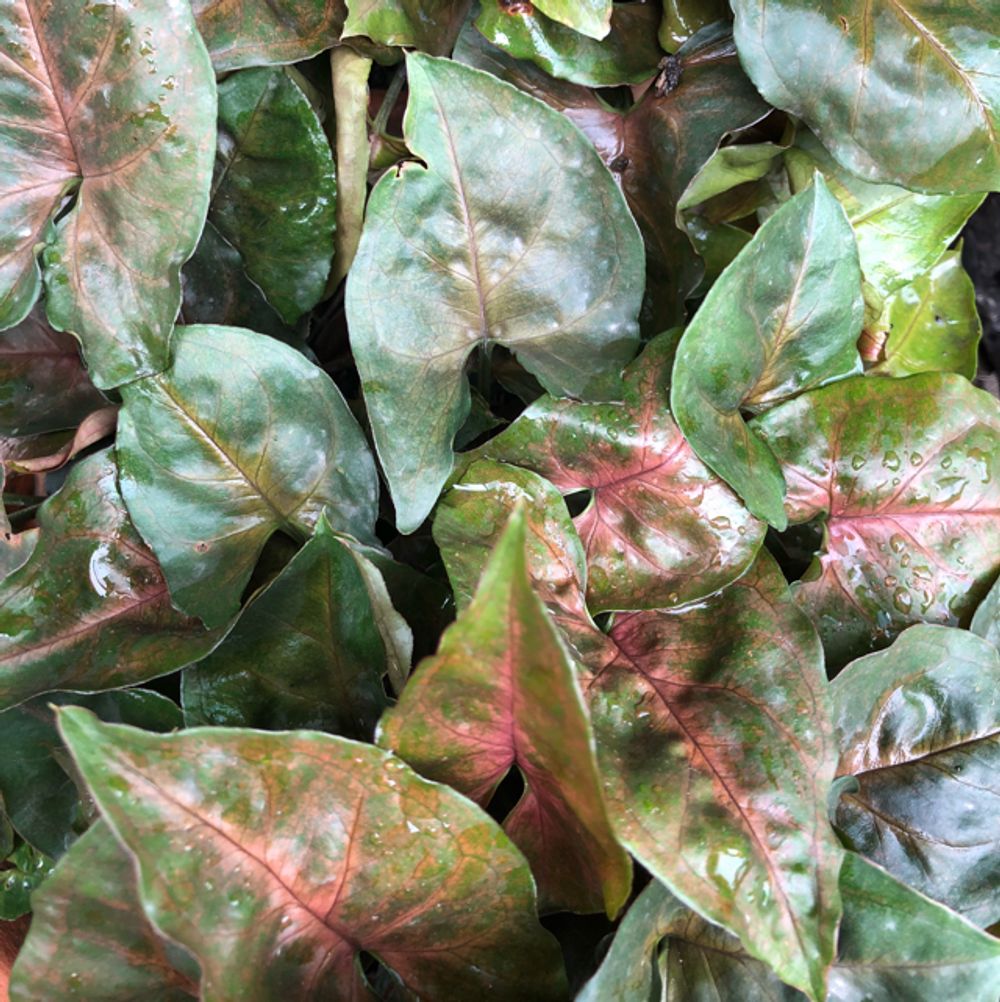Syngonium
(Syngonium)

Description
The Syngonium genus belongs to the Araceae family, which includes other popular indoor plants such as the Peace Lily, Monstera, and Philodendron. This genus is native to Central and South America, but it has become a popular houseplant worldwide due to its easy-care nature, attractive foliage, and air-purifying abilities. In this article, we will explore the Syngonium genus in detail, including its history, taxonomy, morphology, cultivation, and propagation. History and Taxonomy The Syngonium genus was first described by Heinrich Wilhelm Schott in 1832, who named it after the Greek words "syn" (together) and "gonium" (angle), referring to the fused ovaries of its flowers. The genus currently contains around 36 species, but it is still being studied and revised, so the exact number is subject to change. The most commonly cultivated species is Syngonium podophyllum, which has several cultivars with different leaf shapes and colors. Morphology The Syngonium genus is characterized by its climbing or trailing habit, and its leaves, which can have various shapes and colors depending on the species and cultivar. In general, Syngonium leaves are simple, alternate, and heart-shaped or arrow-shaped, with prominent veins and a glossy surface. Some species have leaves that are variegated, meaning they have multiple colors or patterns on them. The plants can reach a height of 6 to 10 feet if they are allowed to climb, but they can also be kept as compact tabletop plants by pruning. Cultivation Syngoniums are easy to care for and can thrive in a variety of growing conditions. They prefer bright, indirect light, but they can also tolerate lower light levels. Too much direct sunlight can burn their leaves, so it is best to provide them with filtered or diffused light. They also prefer well-draining soil that is kept moist but not waterlogged, and they benefit from regular fertilization during the growing season. In terms of temperature, they can tolerate a range of temperatures from 60 to 85 degrees Fahrenheit, but they prefer temperatures between 70 and 80 degrees Fahrenheit. Syngoniums are also known for their air-purifying abilities, as they can remove harmful chemicals from the air, making them a great choice for indoor spaces. Propagation Syngoniums can be propagated through stem cuttings or division. Stem cuttings can be taken from the mother plant and rooted in water or soil. The cuttings should have at least one node, which is where the roots will form. Once the cuttings have rooted, they can be planted in soil and cared for like mature plants. Division is another method of propagation, which involves separating the mother plant into smaller sections and planting them separately. This method is best done during the plant's active growing season, and it can help to rejuvenate older plants. Conclusion The Syngonium genus is a popular choice for indoor plant enthusiasts due to its attractive foliage, easy care, and air-purifying abilities. With a variety of species and cultivars to choose from, there is a Syngonium plant for every style and preference. By following basic care guidelines and propagating through stem cuttings or division, these plants can thrive and bring joy to any indoor space.
Taxonomic tree:







